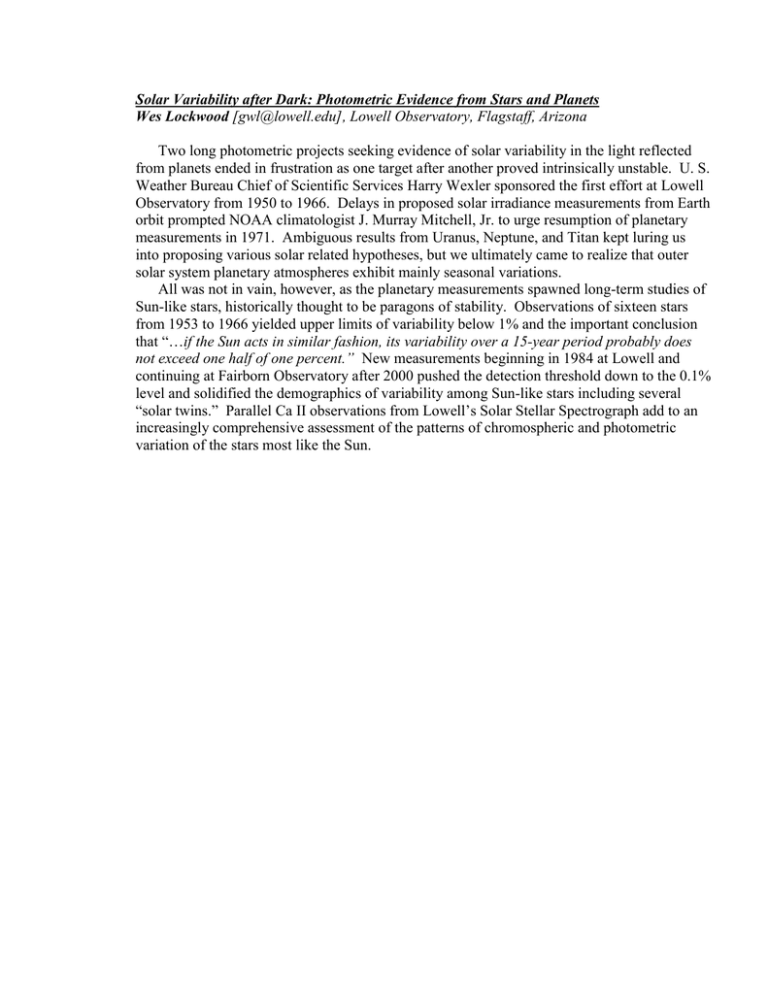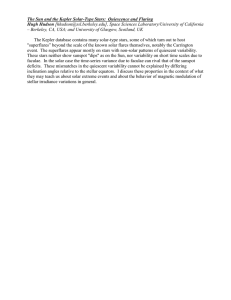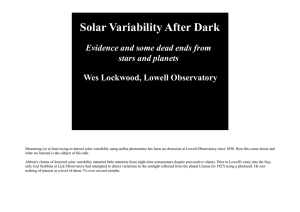Solar Variability after Dark: Photometric Evidence from Stars and Planets
advertisement

Solar Variability after Dark: Photometric Evidence from Stars and Planets Wes Lockwood [gwl@lowell.edu], Lowell Observatory, Flagstaff, Arizona Two long photometric projects seeking evidence of solar variability in the light reflected from planets ended in frustration as one target after another proved intrinsically unstable. U. S. Weather Bureau Chief of Scientific Services Harry Wexler sponsored the first effort at Lowell Observatory from 1950 to 1966. Delays in proposed solar irradiance measurements from Earth orbit prompted NOAA climatologist J. Murray Mitchell, Jr. to urge resumption of planetary measurements in 1971. Ambiguous results from Uranus, Neptune, and Titan kept luring us into proposing various solar related hypotheses, but we ultimately came to realize that outer solar system planetary atmospheres exhibit mainly seasonal variations. All was not in vain, however, as the planetary measurements spawned long-term studies of Sun-like stars, historically thought to be paragons of stability. Observations of sixteen stars from 1953 to 1966 yielded upper limits of variability below 1% and the important conclusion that “…if the Sun acts in similar fashion, its variability over a 15-year period probably does not exceed one half of one percent.” New measurements beginning in 1984 at Lowell and continuing at Fairborn Observatory after 2000 pushed the detection threshold down to the 0.1% level and solidified the demographics of variability among Sun-like stars including several “solar twins.” Parallel Ca II observations from Lowell’s Solar Stellar Spectrograph add to an increasingly comprehensive assessment of the patterns of chromospheric and photometric variation of the stars most like the Sun.



